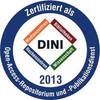In: Bretar, Frédéric (Hrsg.): Laserscanning '09 : ISPRS workshop, Paris, France, September 1 - 2, 2009. Beijing, ISPRS 2009, pp. 1-6 (International archives of photogrammetry, remote sensing and spatial information sciences ; 38/3W8)
Preview |
PDF, English
- main document
Download (913kB) | Terms of use |
Abstract
In times of higher market prices of fossil fuels and to meet the increasingly environmental and economic threads of climate change renewable energy must play a major role for global energy supply. This paper focuses on a new method for fully automated solar potential assessment of roof planes from airborne LiDAR data and uses the full 3D information for both, roof plane detection and solar potential analysis. An image based candidate region detection algorithm reduces the data volume of the point cloud and identifies potential areas containing buildings with high completeness (97%). Three dimensional roof planes are extracted from the building candidate regions and their aspect and slope are calculated. The horizon of each roof plane is calculated within the 3D point cloud and thus shadowing effects of nearby objects such as vegetation, roofs, chimneys, dormers etc. are respected in a proper way. In contrast to other objects such as walls or buildings vegetation is characterized by transparent properties. Thus, in a further step vegetation is detected within the remaining non-roof points and transparent shadow values are introduced by calculating a local transparency measure averaged per tree segment. The following solar potential analysis is performed for regularly distributed roof points and results in both, (i) the annual sum of the direct and diffuse radiation for each roof plane and (ii) in a detailed information about the distribution of radiation within one roof. By calculating a clear sky index, cloud cover effects are considered using data from a nearby meteorological ground station.
| Document type: | Book Section |
|---|---|
| Editor: | Bretar, Frédéric |
| Title of Book: | Laserscanning '09 : ISPRS workshop, Paris, France, September 1 - 2, 2009 |
| Series Name: | International archives of photogrammetry, remote sensing and spatial information sciences |
| Volume: | 38/3W8 |
| Publisher: | ISPRS |
| Place of Publication: | Beijing |
| Date Deposited: | 25 Jul 2025 14:18 |
| Date: | 2009 |
| Page Range: | pp. 1-6 |
| Faculties / Institutes: | Fakultät für Chemie und Geowissenschaften > Institute of Geography |
| DDC-classification: | 550 Earth sciences |
| Uncontrolled Keywords: | Airborne LiDAR, 3D Point Cloud, Solar Potential, 3D Horizon, Segmentation, Vegetation |
| Further URL: |









